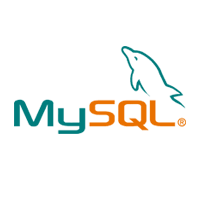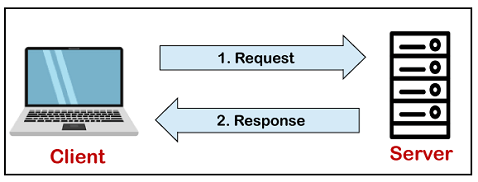MySQL Tutorial

MySQL tutorial provides basic and advanced concepts of MySQL. Our MySQL tutorial is designed for beginners and professionals.
MySQL is a relational database management system based on the Structured Query Language, which is the popular language for accessing and managing the records in the database. MySQL is open-source and free software under the GNU license. It is supported by Oracle Company.
Our MySQL tutorial includes all topics of MySQL database that provides for how to manage database and to manipulate data with the help of various SQL queries. These queries are: insert records, update records, delete records, select records, create tables, drop tables, etc. There are also given MySQL interview questions to help you better understand the MySQL database.
What is Database?
It is very important to understand the database before learning MySQL. A database is an application that stores the organized collection of records. It can be accessed and manage by the user very easily. It allows us to organize data into tables, rows, columns, and indexes to find the relevant information very quickly. Each database contains distinct API for performing database operations such as creating, managing, accessing, and searching the data it stores. Today, many databases available like MySQL, Sybase, Oracle, MongoDB, PostgreSQL, SQL Server, etc. In this section, we are going to focus on MySQL mainly.
What is MySQL?
MySQL is currently the most popular database management system software used for managing the relational database. It is open-source database software, which is supported by Oracle Company. It is fast, scalable, and easy to use database management system in comparison with Microsoft SQL Server and Oracle Database. It is commonly used in conjunction with PHP scripts for creating powerful and dynamic server-side or web-based enterprise applications.
It is developed, marketed, and supported by MySQL AB, a Swedish company, and written in C programming language and C++ programming language. The official pronunciation of MySQL is not the My Sequel; it is My Ess Que Ell. However, you can pronounce it in your way. Many small and big companies use MySQL. MySQL supports many Operating Systems like Windows, Linux, MacOS, etc. with C, C++, and Java languages.
MySQL is a Relational Database Management System (RDBMS) software that provides many things, which are as follows:
- It allows us to implement database operations on tables, rows, columns, and indexes.
- It defines the database relationship in the form of tables (collection of rows and columns), also known as relations.
- It provides the Referential Integrity between rows or columns of various tables.
- It allows us to updates the table indexes automatically.
- It uses many SQL queries and combines useful information from multiple tables for the end-users.
How MySQL Works?
MySQL follows the working of Client-Server Architecture. This model is designed for the end-users called clients to access the resources from a central computer known as a server using network services. Here, the clients make requests through a graphical user interface (GUI), and the server will give the desired output as soon as the instructions are matched. The process of MySQL environment is the same as the client-server model.

The core of the MySQL database is the MySQL Server. This server is available as a separate program and responsible for handling all the database instructions, statements, or commands. The working of MySQL database with MySQL Server are as follows:
- MySQL creates a database that allows you to build many tables to store and manipulate data and defining the relationship between each table.
- Clients make requests through the GUI screen or command prompt by using specific SQL expressions on MySQL.
- Finally, the server application will respond with the requested expressions and produce the desired result on the client-side.
A client can use any MySQL GUI. But, it is making sure that your GUI should be lighter and user-friendly to make your data management activities faster and easier. Some of the most widely used MySQL GUIs are MySQL Workbench, SequelPro, DBVisualizer, and the Navicat DB Admin Tool. Some GUIs are commercial, while some are free with limited functionality, and some are only compatible with MacOS. Thus, you can choose the GUI according to your needs.
Reasons for popularity
MySQL is becoming so popular because of these following reasons:
- MySQL is an open-source database, so you don't have to pay a single penny to use it.
- MySQL is a very powerful program that can handle a large set of functionality of the most expensive and powerful database packages.
- MySQL is customizable because it is an open-source database, and the open-source GPL license facilitates programmers to modify the SQL software according to their own specific environment.
- MySQL is quicker than other databases, so it can work well even with the large data set.
- MySQL supports many operating systems with many languages like PHP, PERL, C, C++, JAVA, etc.
- MySQL uses a standard form of the well-known SQL data language.
- MySQL is very friendly with PHP, the most popular language for web development.
- MySQL supports large databases, up to 50 million rows or more in a table. The default file size limit for a table is 4GB, but you can increase this (if your operating system can handle it) to a theoretical limit of 8 million terabytes (TB).
History of MySQL
The project of MySQL was started in 1979 when MySQL's inventor Michael Widenius developed an in-house database tool called UNIREG for managing databases. After that, UNIREG has been rewritten in several different languages and extended to handle big databases. After some time, Michael Widenius contacted David Hughes, the author of mSQL, to see if Hughes would be interested in connecting mSQL to UNIREG's B+ ISAM handler to provide indexing to mSQL. That's the way MySQL came into existence.

